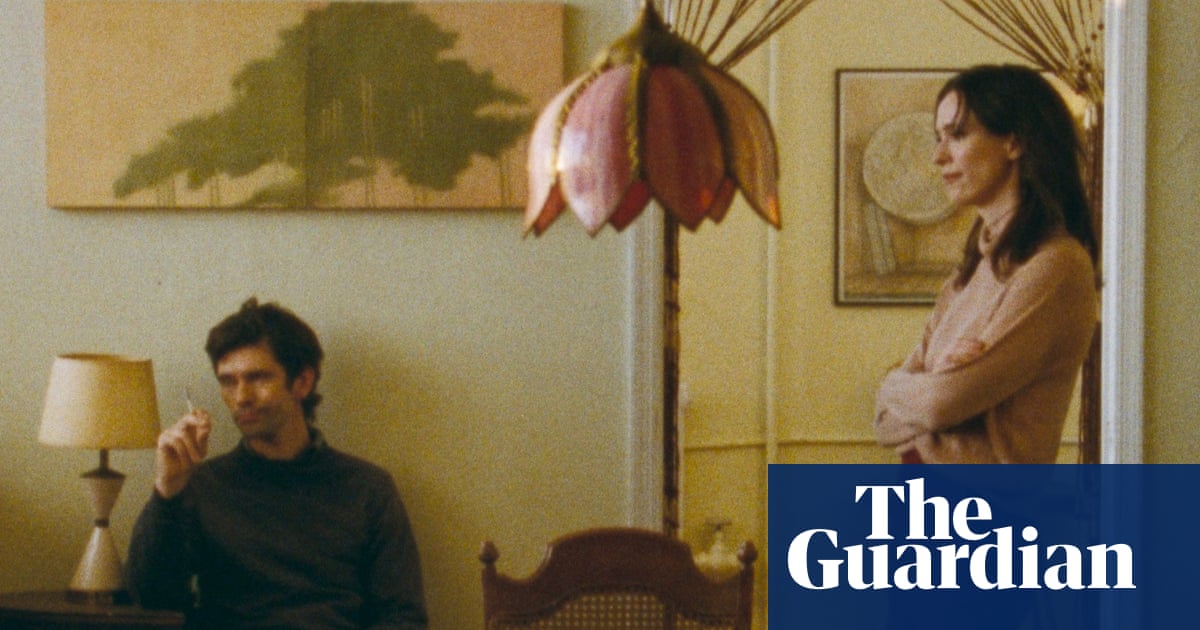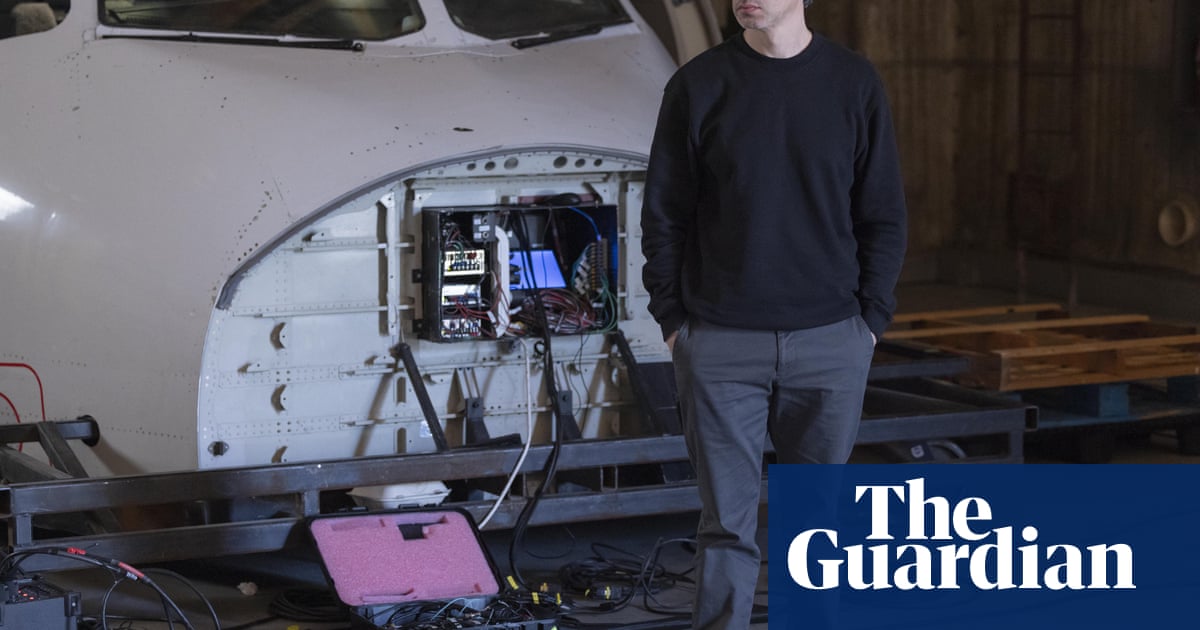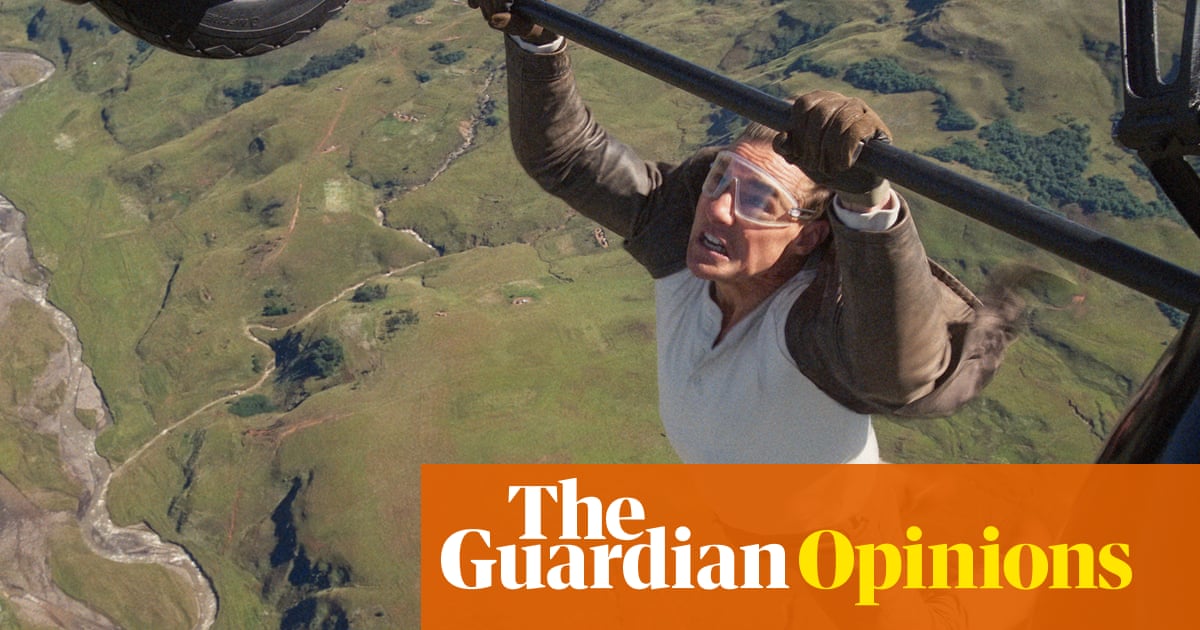One August evening in 1955, members of York Mountaineering Club had convened in the city’s Olde Starre Inne. They were, perhaps, lamenting the shortage of mountains (or indeed hills) in York, when club chair David Laughton turned up waving a copy of that month’s Dalesman magazine.
It contained a challenge, issued by Bill Cowley, author of the Farmer’s Diary column. Cowley would provide a cup – “an inexpensive one” – to anyone who traversed the North York Moors in less than 24 hours: “… You would cross Carlton Moor, Cringle Moor and Cold Moor; Botton Head and Bloworth; the long flat expanse of Stony Ridge … over Howl Moor and Simon Howe, by Tom Cross Rigg and Snod Hill to Lilla Cross, then over Fylingdales Moor … to the sea.”
When Laughton asked his fellow mountaineers if they were on for it, a loud “Aye” went up. After several weekends of hitchhiking to the moors to finalise a route, the seven men and three women of the YMC were ready. They, plus Cowley himself, two senior scouts from Middlesbrough and a forest ranger from Guisborough, began their attempt at noon on 1 October.
For 23 hours, the party waded through heather and navigated by compass towards Ravenscar on the coast, where the tankards were distributed. Mindful of the burial mounds on the Moors, Cowley had named the walk after the ancient Lyke Wake Dirge, a “lyke” being a Yorkshire dialect word for a corpse:
“This ya neet, this ya neet, / Ivvery neet an’ all, / Fire an’ fleet an’ cannel leet, / An’ Christ tak up thy saul”
(I recommend the version by Steeleye Span, who sound like a choir of ghosts in some vast ruined cathedral.)
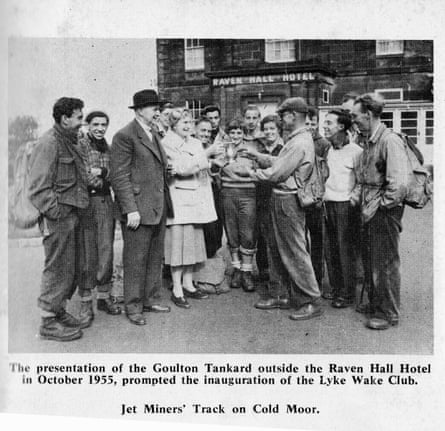
Among that original party was Malcolm Walker, a trim, bronzed, humorous young man of 19. In 1971, he and his wife, Edna, and their children, Paul and Lindsey, moved into the York street where I lived. I think I always knew Malcolm had been a Lyke Wake pioneer – not that he ever boasted about it, but the walk was at the peak of its popularity then, the ultimate challenge in the great testing ground of the “broad acres”.
In that year, my mother died, and Malcolm and Edna took me and my sister under their wing. We went camping with the Walkers most summer weekends. I recall navigating by dinghy along the River Swale in the broiling summer of 1976, and happy trudges through heather, with the Walkers’ border terrier, Copper, forgoing his delight in frolicking ahead to walk beside me for a while – out of sheer politeness, it always seemed.
I walked the Lyke Wake with Malcolm and Paul in 2005, to mark the 50th anniversary, and so I earned the black coffin lapel badge that signifies the achievement and summarises the Yorkshire philosophy: mistrust jollity. There’s never much of it on the walk. The moors, it seems, don’t want you there. If the sun doesn’t burn you, the wind will. Dare to sit on the heather and something will bite you, ideally not an adder. Only in retrospect do you appreciate the scenery: the fauvist colours – pinks, yellows, lime greens – and the drama of the time-lapse weather.
A few weeks ago, Paul Walker called me to say that, in this 70th anniversary year, he was mounting another Lyke Wake attempt. Five of his six children would be taking part, as well as Lindsey’s husband and their three sons. Lindsey and Paul’s wife, Christine, would be driving support cars (even Bill Cowley’s lot had a support team). Malcolm, now 89, would walk the final stretch. Was I on for it? Well, to say “no” at 62 years of age would have been to throw in the towel. My son, Nat, veteran of a 30-miler with Malcolm, would also come along.
We started from Osmotherley at 2.15am, to get the dark bit out of the way first. As we scrambled over the crazy paving of Carlton Bank, Middlesbrough glittered below. Dawn broke slowly and with the greatest reluctance, the sun pasty white and wreathed in rain clouds. The hardest part came six hours later, as we followed the seemingly endless exposed ridge above Farndale that once carried an ironstone railway.
after newsletter promotion

We trudged past enigmatic standing stones, orange ponds and black expanses of burnt heather (to keep it suppressed, hence the resentful mood of the landscape). Occasionally, the smoky rain clouds dissipated, and all Farndale became golden green for a few minutes. At last, we came to that oasis of Blakey Moor, the Lion Inn. Whereas the people in the pub were appalled by my appearance – “You look really cold … Your eyes are bloodshot” – I considered them ridiculously complacent, with their suede shoes, red wines at 11am and fireside seats.
We trudged on, skirting Rosedale now. Observing a great waterfall of light coming through clouds, one of Paul’s children said: “It’s like God’s coming down to Earth.” I heard snatches about Malcolm from his grandchildren: about how he’d taken them on walks with the hiking club of the printing firm where he worked. I heard how, last year, the day after Edna’s funeral, he undertook the York Parkrun, which he’s done several times, always joking that he came “first” (in the 80 and over category, that is – a subdivision he usually has to himself).
We met Malcolm in the early evening, on dusty Jugger Howe Moor, under a sky of milky blue. He walked the last five miles with us, chatting to anyone who wanted to chat (which was not everyone at this point), our target being a radio mast that seemed to retreat further into the distance every time I glanced away. We reached the mast at 8pm, having walked 42 miles. We then convened for photographs in a lounge at the Raven Hall Hotel, Ravenscar.
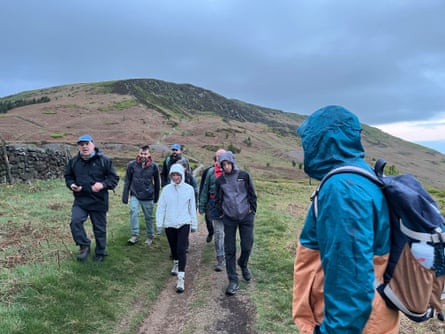
As Malcom sipped beer from his “inexpensive” trophy mug of 1955, I asked him why anyone should do the walk. “Well, there’s a lot to be said against it,” he said, and we reflected silently on our crossings (my two, his half-dozen) – on bouts of nausea, hay fever, bites and blisters. “I count the walk an achievement, I suppose,” Malcolm said at length, “but nothing to this …” and he waved his tankard in the general direction of his family, all reanimated by hotel comforts.
I pointed out that the walk had been the pretext for their coming together. “Aye,” said Malcolm, nodding, “I suppose that’s another thing you could say in its favour.” Beyond the hotel windows, the sun was setting over Robin Hood’s Bay: pink clouds rolling over a purple sea. I could have mentioned that this wasn’t just some family tea party, it was a day that would be seared into everyone’s memory, but in Yorkshire, as mentioned, one doesn’t want to go over the top.
Andrew Martin writes the Reading on Trains Substack

.png) 5 hours ago
3
5 hours ago
3


